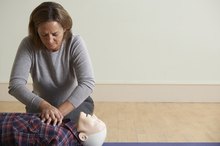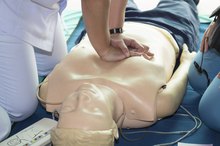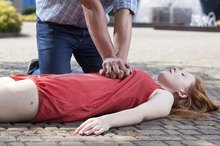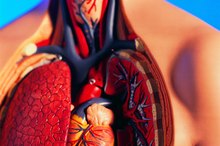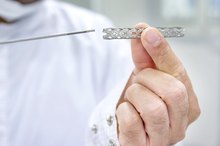What does fact checked mean?
At Healthfully, we strive to deliver objective content that is accurate and up-to-date. Our team periodically reviews articles in order to ensure content quality. The sources cited below consist of evidence from peer-reviewed journals, prominent medical organizations, academic associations, and government data.
The information contained on this site is for informational purposes only, and should not be used as a substitute for the advice of a professional health care provider. Please check with the appropriate physician regarding health questions and concerns. Although we strive to deliver accurate and up-to-date information, no guarantee to that effect is made.
How to Perform CPR on a Person With a Pacemaker
Cardiopulmonary Resuscitation, usually referred to as CPR, is a life-saving skill that can be used to provide aid when a person’s heart has stopped and they’re not breathing. The skill can, and should be, used on people with or without pacemakers.
Features
CPR comes into play in cases of sudden cardiac arrest, meaning a person’s heart as well as breathing have stopped. With every minute that passes the chances of their being revived are diminished. Someone doing CPR is manually pushing blood through a victim’s system and providing some level of oxygenation.
Types
CPR Vs. Rescue Breathing
Learn More
No matter what organization provides the training, CPR skills are the same. A rescuer provides two breaths to the victim and compresses their chest 30 times at a rate of 100 per minute. Most CPR courses also teach the use of an automated external defibrillator, or AED, which is used to shock a heart back into beating, according to the Mayoclinic.com.
Considerations
CPR is the same on a person with a pacemaker as it is without a pacemaker. A bystander provides compressions and breaths until the victim begins breathing on their own or trained help arrives. However, it’s the use of an AED on a victim with a pacemaker that requires some minor changes.
Significance
10 Steps to CPR
Learn More
Using an AED is simple, and most of the devices provide step-by-step audible instructions. The unit is turned on, and two electrode pads are applied to the victim. One goes on the lower torso. The other is placed on the top of the chest, usually the right side. But, if there’s a pacemaker visible, the top pad should be placed an inch or more away from the pacemaker.
- Using an AED is simple, and most of the devices provide step-by-step audible instructions.
- But, if there’s a pacemaker visible, the top pad should be placed an inch or more away from the pacemaker.
Identification
Pacemakers are identified in a victim by a small rectangular bump located just under the skin on the right side, usually no bigger than the size of a deck of cards. According to pacemaker maker Boston Scientific, a rescuer should put the AED pads as far away from the device as possible. The American Heart Association also recommends those with implanted pacemakers carry some medical identification either in a wallet or on a bracelet or necklace letting rescuers know the device is there 2.
Related Articles
References
- Mayo Clinic
- American Heart Association
- National Heart, Lung, and Blood Institute. Pacemakers.
- Heart Rhythm Society. Pacemaker.
- Wish, M. INOVA: Heart & Vascular. History and development of pacemakers.
- Brignole M, Auricchio A, Baron-Esquivias G, et al. 2013 ESC Guidelines on Cardiac Pacing and Cardiac Resynchronization Therapy: the Task Force on Cardiac Pacing and Resynchronization Therapy of the European Society of Cardiology (ESC). Developed in Collaboration with the European Heart Rhythm Association (EHRA). Eur Heart J 2013; 34:2281.
- Tracy CM, Epstein AE, Darbar D, et al. 2012 ACCF/AHA/HRS Focused Update of the 2008 Guidelines for Device-based Therapy of Cardiac Rhythm Abnormalities: a Report of the American College of Cardiology Foundation/American Heart Association Task Force on Practice Guidelines and the Heart Rhythm Society. Circulation 2012; 126:1784.
Writer Bio
Richard Huff is a journalist and author with nearly 30 years experience. He is the author of several books on motorsports and a handful of non-fiction titles for children. He's been working in daily journalism for two decades, and has had freelance work published in publications as Seventeen, Stock Car Racing and JEMS.
